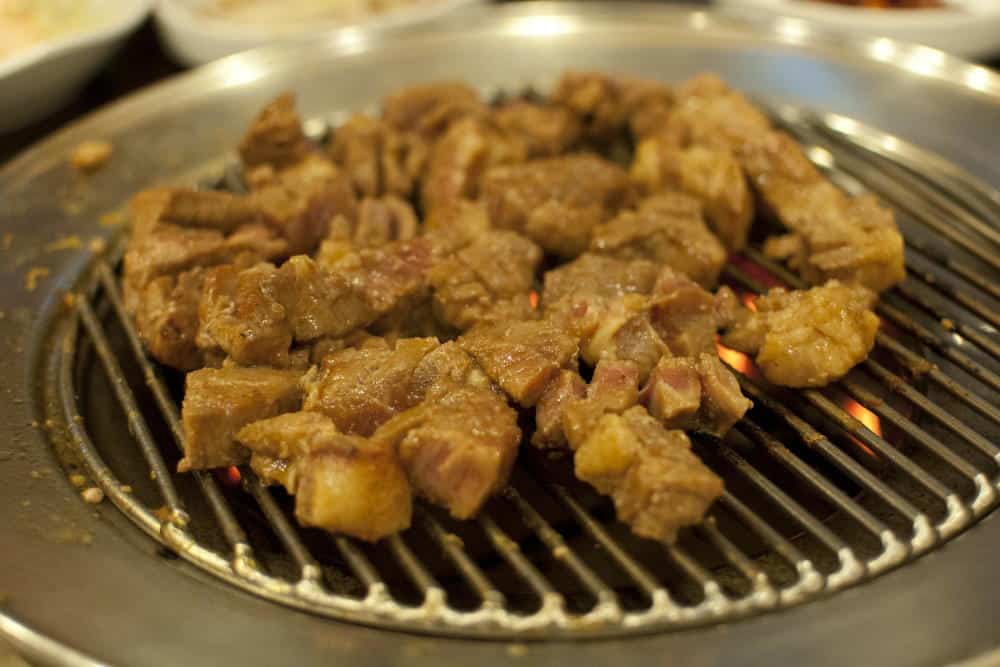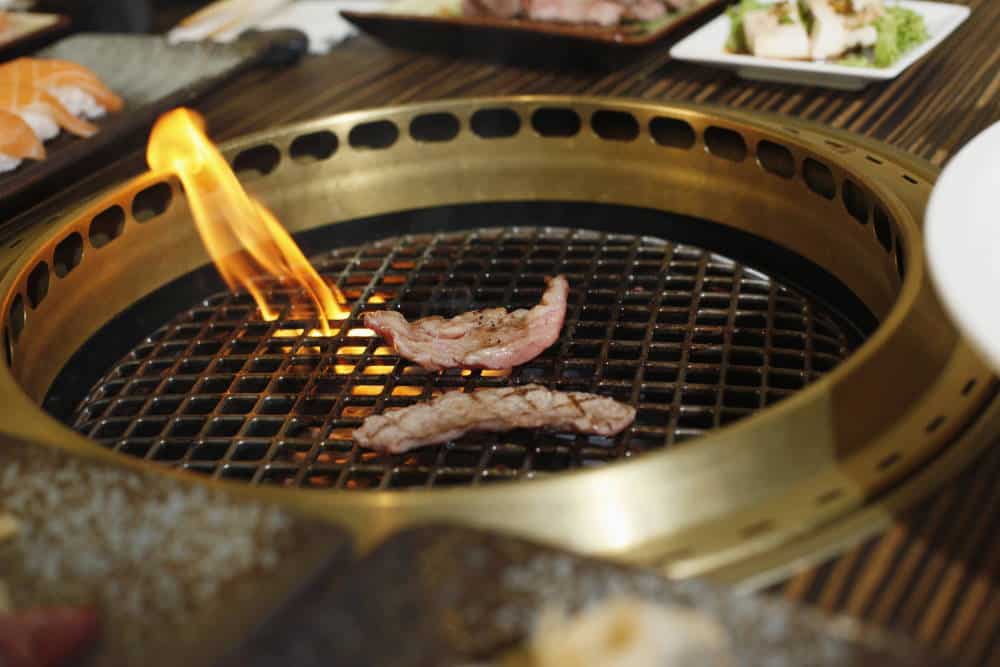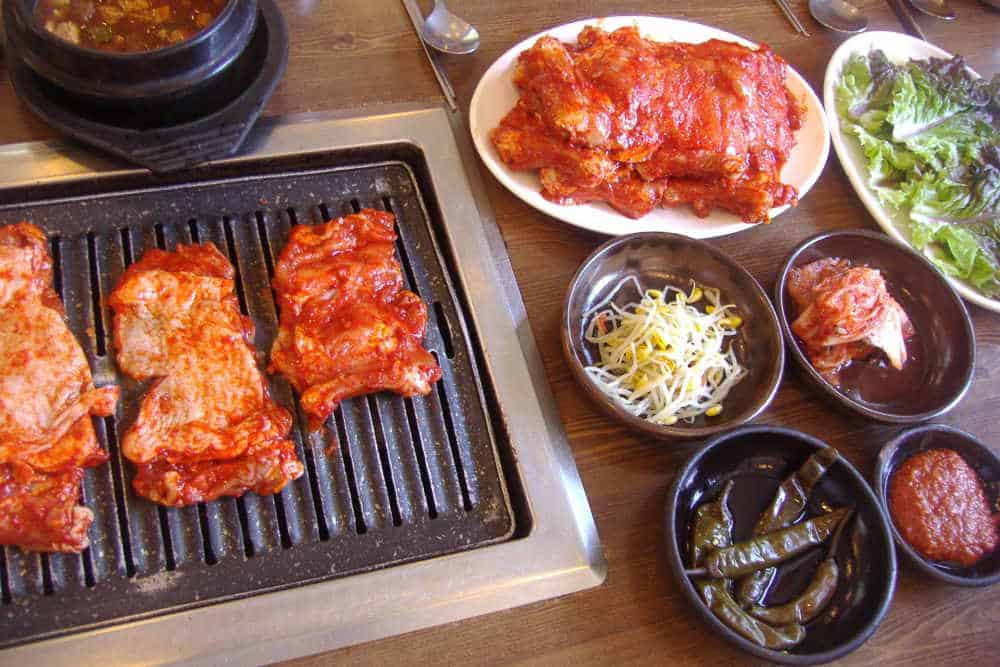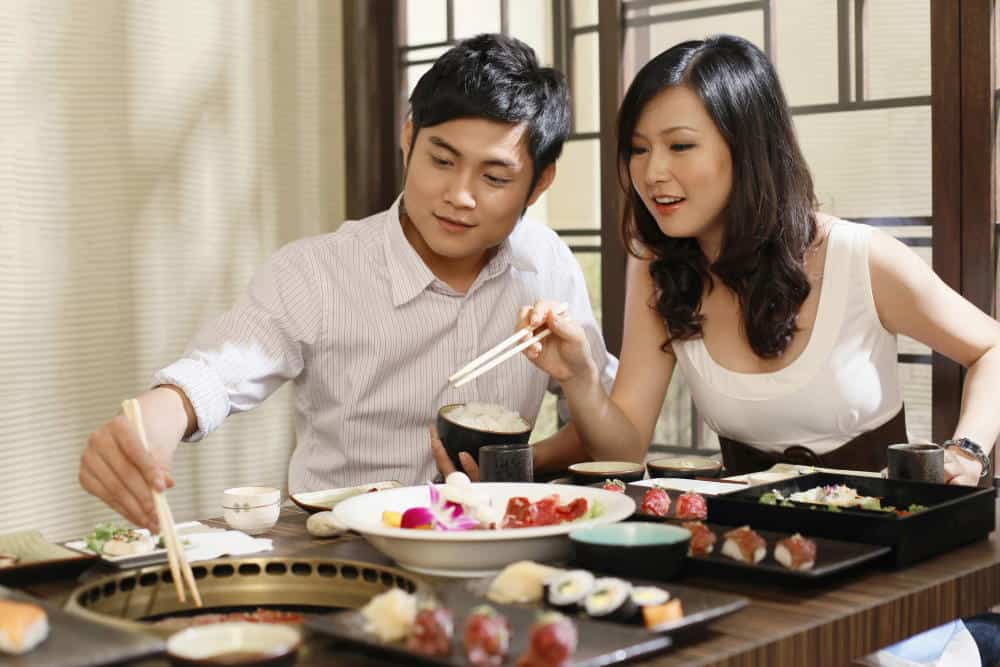What makes Korean BBQ different is the method of preparation. Unlike regular grilling, Korean Barbecue is done on the dining table itself. Korean Barbecue is one of the most popular and exciting ways to grill meat. This method of cooking food leads to some excellent beef, pork, or chicken dishes. You will find many restaurants in Korea that provide a grill on their dining tables. If a restaurant doesn’t provide an in-built grill, they provide portable stoves on the dining space, or the chef would prepare the dishes using a centrally displayed grill.
Curious about Bulgogi? It is a popular form of Korean Barbecue. It is prepared using beef sirloin or tenderloin that has been thinly sliced and marinated. In Korea, you will also find that people love bulgogi short ribs or Galbi. Other forms of the Korean Barbecue are also immensely popular within the country and are gaining popularity in the western world.
Marinated and Non-marinated Barbecue Meat
You can prepare Korean Barbecue dishes using marinated as well as non-marinated meats. What makes Korean Barbecue different is the special Korean bbq sauce that provides a unique flavor to these dishes.
Marinated Korean Barbecue

As mentioned before, Bulgogi is the most popular form of Barbecue in Korea. The Korean BBQ ingredients for marinated meat include a mixture consisting of soy sauce, sugar, sesame oil, garlic, and pepper.
The best way to prepare this type of Barbecue is to use gridirons or perforated dome griddles. However, many people also prefer pan cooking.
The Bulgogi short ribs or Galbi is made using a slightly different variant of the marinating mixture. You will see that people add sliced onions alongside soy sauce, water, garlic, and sugar. According to the experts, Galbi tastes best when you prepare it with charcoal or burned wood chips.
If you want to enjoy barbecued steak, you would love Jumulleok, a short streaked Korean Barbecue. Its flavor is one of a kind due to the Korean BBQ sauce made with garlic, sesame oil, pepper and the steak juices. Some Korean BBQ in Korea use sliced ducks instead of beef to prepare this dish.
Daeji bulgogi, a spiced pork dish, has a distinctive flavor compared to other Korean Barbecue types. When traditionally preparing this dish, you don’t use Soybean sauce, one of the key Korean BBQ ingredients, for marinating the meat.
Is Korean BBQ spicy?
The answer to this question depends on your taste. If you want, you can make a Barbecue that isn’t spicy. On the other hand, if you are brave enough, you can add extra spices to fire up your taste buds.
Non-marinated Korean Barbecue
If you are looking for a non-marinated meat barbecue, you might want to try Chadolbegi. It is a dish made using thinly sliced beef brisket.
Samgyeopsal is another popular non-marinated form of Barbecue made using thick strips of unsalted pork belly. If you visit a Korean BBQ in Korea, you will see that people prefer Samgyeopsal over Chadolbegi, mainly due to its lower price. The best way to enjoy Samgyeopsal is by consuming it with Soju, a traditional Korean alcoholic beverage.
You will also see that loins and boneless ribs are also quite popular in the country.
Korean BBQ vs. Regular BBQ Sauce
If you don’t have the authentic Korean BBQ sauce, you can try the regular sauces. But you will miss some of the exotic flavors. The reason behind this flavor difference comes down to the ingredients of the respective sauces.
The regular barbecue sauce consists of three main ingredients that provide it with the texture and flavor. These ingredients are vinegar, tomato paste, and ketchup, along with some spices and condiments. This type of sauce goes well with the traditional Barbecue.
On the other hand, the Korean BBQ sauce is made using soy sauce, brown sugar, garlic, rice wine vinegar, chile-garlic sauce, ginger, sesame oil, and black pepper. When put together, these bring forth the traditional Korean sauce with the perfect amount of spiciness and tang to go along.
To get the best experience, use the traditional sauce if it is available online. Alternatively, you could get the ingredients and prepare the sauce at home. You need to whisk cornstarch and water and add it to boiling soy sauce. Add the remaining ingredients, and your sauce is ready for use once you cook it for five minutes.
How to Prepare Korean BBQ at Home

To prepare Korean Barbecue at home, you would need lots of meat, spices, a grill, and a willingness to watch over the grill.
Preparing the Grill
The first step towards preparing an authentic Korean Barbecue is firing up the grill. Make sure that the grill reaches temperature in the range of 300 degrees Fahrenheit.
Prepare the Meat
Daeji Bulgogi Korean spicy pork, bulgogi short ribs, and other dishes are relatively easy to Barbecue. It is the style of preparation that makes the Korean Barbecue different from the rest. If you want, you can let go of the tradition if you want to prepare the dishes according to your liking.
However, you might want to instruct the butcher to provide the meat suitable for the barbecue style or look for meat sold, especially for Korean BBQ recipes, if you buy it from the supermarket.
Use the traditional recipe consisting of soy sauce, sugar, sesame oil, garlic, and pepper to prepare the marinating mixture. For the best result, let the meat marinate overnight.
Once you are ready for some barbecue action, take the meat out of the fridge (preferably one hour before starting), fire up the grill at 300 degrees. Toss the meat, with seasoning applied, on the grill, and cook it evenly for 15 to 20 minutes. Let it cool and add spices and salt as per your liking.
If you are going with one of the Korean bbq recipes that don’t need marination, skip the overnight marinating process.
Watch the meat regularly as it cooks, and flip it to the other side once it is halfway done. Once cooked, you can have it with lettuce, kimchi, and other side dishes of your choice.
Popular Korean BBQ Side Dishes

The Korean Barbecue is not complete unless you serve it with the Korean BBQ side dishes. The popular Banchan (which is what side dishes are called in Korea) include a spicy cucumber salad, cabbage doenjang soup, egg omelet rolls, and a spinach dish.
Spicy Cucumber Salad
To prepare the cucumber salad, slice the cucumber and green onions, and mince some garlic. Put the ingredients in a bowl and add garlic, green onions, sesame seeds, toasted sesame oil, and gochujang. Mix thoroughly, and your first Korean BBQ side dish is ready.
Cabbage Doenjang Soup
The cabbage doenjang soup is not exactly a Korean barbecue side dish, but people in Korea enjoy it with the barbecue so much that it is hard to ignore it. It requires two special ingredients, doenjang, a salty fermented soybean paste, and gochujang, a fermented hot sauce.
It would be best if you had broth, green onions, garlic, soy sauce, and Napa cabbage in addition to doenjang and gochujang, which are a key ingredient in this Korean BBQ recipe.
Take a medium-sized vessel and boil the broth. Add the ingredients to the simmering broth, and cook for 10 to 15 minutes. Once the cabbage is tender, add garlic and green onions and cook for five more minutes. Your soup is ready to be served.
Egg Omelet Rolls
This side dish needs three simple ingredients, eggs, a green onion, a carrot, and salt. Chop the vegetables into small pieces, beat the eggs (don’t forget to add a pinch of salt).
Put half beaten egg into a pan, add the veggies and flip the omelet. Add the remaining beaten egg and roll the dish. Your final Korean BBQ side dish is ready for serving.
The Final Step
Once you are done with grilling the meat, get ready for plating it along with some side dishes, and enjoy the food. You can also try Soju, a traditional Korean alcoholic beverage, to go along with the Barbecue.

